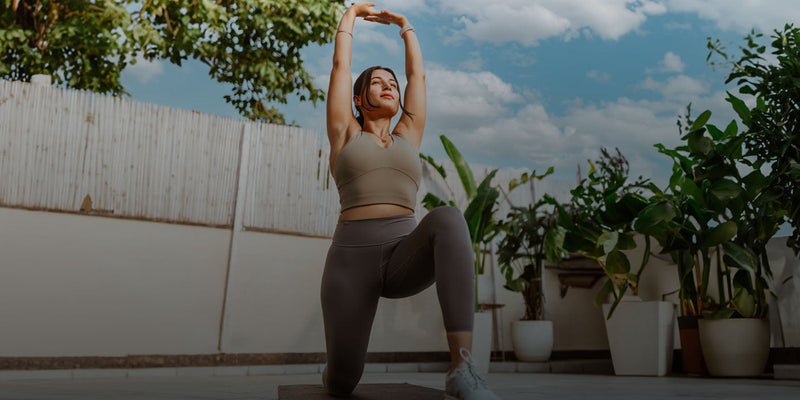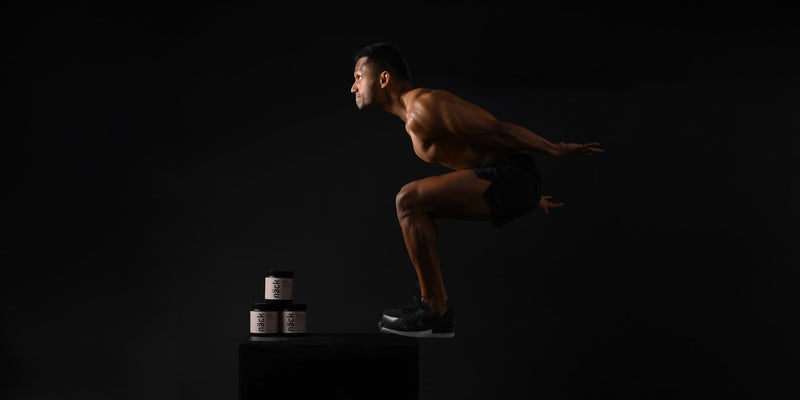Breathe in, breathe out.
Bring your attention to the rhythm of your heart and notice how your stomach rises as you breathe in and falls back as you breathe out. Movement, if you simply notice, is at the very core of our being.
Humour me just a little longer, will you? Now think of a happy memory. Is it a still image? Or can you visualize it happening all over again, complete with actions, perhaps even sounds? Notice how your body responds to this recollection. Is that a smile forming on your lips?
Descartes was nearly there when he said, I think, therefore I am. It is true that our ability to think is indeed what brings meaning to our individual existence. However, believing that the thinking occurs only in the mind is far from the truth. It is as if the mind and the body are two separate entities going about their days, merrily doing their own thing, never having to consider the other. Whereas the mind and the body are just two sides of the same coin. They have to coexist. The mind cannot decide on its own how hot it is going to be outside until the body directly feels and experiences the intensity of the sun. And the body cannot seek shelter under a tree or in an air-conditioned room until the mind tells it the best possible course of action. Similarly, the mind cannot decide whether we love something or better yet, someone without the embodied experience of the warm and fuzzy feelings when we are around them. And the body cannot reach for an embrace without the mind’s insistence that it may be safe to do so.
We aren’t just thinking beings. We are thinking, feeling, living, breathing, and experiencing beings. What the body experiences, the mind makes sense of. What the mind decides, the body executes. Long story short, there exists a mind-body connection that we no longer can and should turn a blind eye to. I, for one, think that most of us have lived long enough denying the existence of this connection and forcing ourselves to pick one over the other. Choose the mind over the body and you will have a successful day at the gym and if you happen to choose the opposite you are deemed a potato. But allowing the body to rest when needed, as you must have read several times, especially in the last couple of years, is just as productive. Then why not listen to the wisdom of the mind AND the body in tandem?
Cue Movement Therapy!

Movement Therapy?! What is that? Do I need to dance? No way can I do that! I don’t intend to sign up for a dance class. I don’t need therapy let alone movement therapy. Pfft!
Hold your horses. Breathe in, breathe out, remember? Allow me to explain and take you on another journey to the wondrous and vastly untapped world of Dance/Movement Therapy (DMT).
Movement is a language. Even before we start talking and stringing words together, we as babies communicate through nonverbal cues and movements such as yawning, cooing, crawling, reaching for things, flapping our tiny arms and legs, giggling and of course, crying. A Dance/Movement Therapy practitioner considers nonverbal just as important as verbal communication if not more. Movement can be developmental, communicative, functional and expressive and a DMT practitioner will observe these and facilitate a process towards addressing the emotional, social, cognitive, and physical integration of an individual to achieve the larger goal of improving one’s health and wellbeing.
Speaking of nonverbal and movement cues, it is also important to look at the ways in which we perceive the world around us. Most of us perceive it through visual cues, some through auditory cues, and others through kinesthetic or sensory cues. In fact, all of us use all these faculties to varying degrees.

It is then safe to assume that dancers and athletes are more attuned with their kinesthetic senses and are more aware of their bodies. For this reason, most mental health professionals engaging in the field of Dance/Movement Therapy have had some prior experience or relationship with dance. I spoke to a few of them and when asked about how they found their way to Dance/Movement Therapy especially since it did not gain much popularity in India until a few years ago, most of them had similar yet uniquely insightful experiences to share. “6 years of professional dancing and I had never felt my emotions, my body and myself the way I did in one DMT session,” said Pallavi Shimpi who is now a psychologist focused in trauma and body-based work.

Damini Sahay who is a belly dance artist and a DMT practitioner was already working as a child psychologist and a clinical psychologist while also working as a belly dance instructor when she started to understand the value of movement in therapy. She said, “I witnessed so much therapy and healing work happen in the bodies of the women and even men who came to these dance classes more than I ever saw in my work as a psychologist which is when I decided to pursue and study it in depth.” I found this especially meaningful because while dancers or athletes have quicker access to the body’s knowledge, anyone who engages in their natural and authentic movement consciously will be able to tap into the same knowledge residing in their bodies without even realizing that they are engaging in healing or therapy. A trained facilitator can then just hold space for the movement to occur and help you make sense of what you uncover. And let’s face it, our words do have the potential to lie. We have all done it at one time or another. But our bodies are incapable of concealing our truth. Try to sit up straight at the end of a long, tiring day and you will have your answer. This is the beauty of body-based work.

What has also been interesting for me to note in my practice is that most people understand the aforementioned mind-body connection in theory but struggle with taking that final step and exploring it themselves and we can attribute some of it to our culture where we are often discouraged to engage in play or activities that we are not good at or can make a living out of. I loved how Mehr Lungani, psychotherapist and therapeutic movement facilitator, explains movement therapy and arts-based therapy while also breaking the stigma around therapy as a whole. She said “When we talk about using any of the arts as therapy (dance, drama, music, drawing), there is no evaluation or certificate of excellence involved. It is a form of expression, and expression can neither be good nor bad. Nor can it be better than someone else’s. Your movement is your expression, as unique as you are. And what it means to you is exactly what it means to your therapist.”
Today, more and more people are open to the idea of exploring movement not just from a performative lens but as a way of life. The field too is slowly but steadily gaining momentum with more and more mental health practitioners looking at arts and movement as a means of therapy. India now also has an Indian Association of Dance Movement Therapy (IADMT) which is a professional body formed to set ethical standards for professional practice, training, and supervision in the field. I am hopeful that there’s no looking back now.

Nidhi Dongre, a dancer and movement therapy practitioner, summed it up a little more realistically. “The youth of India are starting to engage in holistic practices, alternate lifestyles, and are simply more aware of their mental health. So let’s just say we are in a dynamic world with individuals making conscious decisions and choices. We are evolving!”

To conclude I would like to quote Tripura Kashyap, one of my teachers and the pioneer of Dance Movement Therapy in India. “Movement is our universal mother tongue. It keeps us alive and human. Let’s move, express, transform ourselves through this beautiful medium in which we all live!”
We move, therefore we are.











